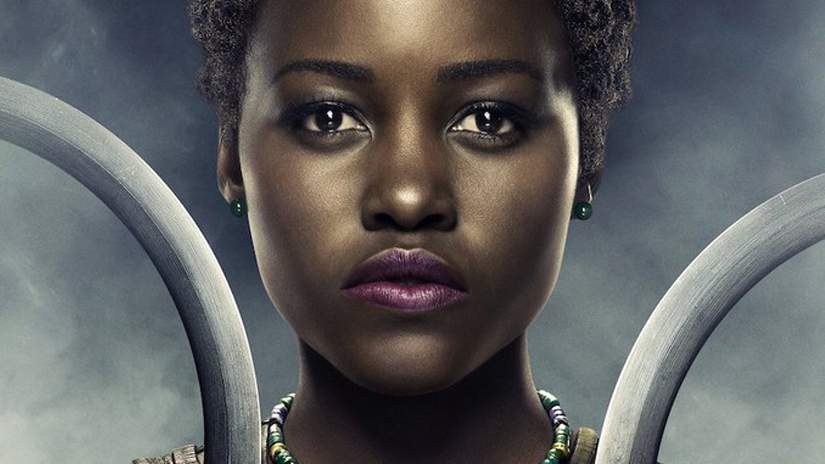
In part 1 (Click here to read), we addressed the role that the introduction of Black Panther played in the Marvel Universe as it allegorised the Cold War period. In Part 2 we will look at the Afrikan movers and shakers during this period and how they undoubtedly informed Stan Lee & Jack Kirby as well as later Black writers of the character, from Christopher Priest to Ta-Nehisi Coates. This journey will take us all the way into ancient history right back to the present day, so thank you for joining me on this ride.
Lets begin by addressing the most obvious correlation – that of the Black Panther Party for Self Defence as founded by Bobby Seale and Huey P Newton in October 1966. Fantastic Four #52, in which King T’Challa was introduced, is dated July 1966. Every narrative on the history of the Black Panther character will make it clear to you that he predates the founding of the Party by a few months, and this is true – BUT only if we are talking specifically about the Black Panther Party for Self Defence. The origins of the BPPfSD beginning in Oakland, lie in the founding of the Lownes County Freedom Organisation in Alabama. Kwame Ture (then known as Stockley Carmichael) and other leading members of the Student Non-Violent Coordinating Committee (SNCC), founded LCFO as a political party in 1965 for the sake of “Registering Voters… Running Candidates… Health Clinics”. The Party adopted the Black Panther symbol as a tool of psychological warfare against the Democratic Party at the time whose symbol in Alabama was a white rooster accompanied by the slogan “White Supremacy – for right”.
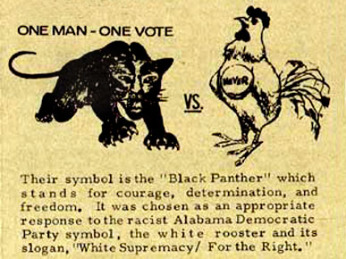
Thus, the LCFO simply became known as the “Black Panther Party”, inspiring a number of replicas across the country, the most prominent becoming the Black Panther Party for self Defence – who basically adopted the exact same logo. The Black Panther in name and symbol therefore had already become a prominent feature of the Black Power Movement by 1966.
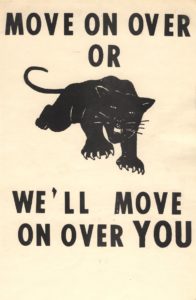 Interestingly, the introduction of the Dora Milaje in Captain America: Civil War sees Ayo (played by Florence Kasumbo) giving Natasha Romanov the G-Check, “Move or you will be moved” – a phrase very similar to the LCFO slogan seen on this promotional poster. Coincidence? Maybe. Maybe not!
Interestingly, the introduction of the Dora Milaje in Captain America: Civil War sees Ayo (played by Florence Kasumbo) giving Natasha Romanov the G-Check, “Move or you will be moved” – a phrase very similar to the LCFO slogan seen on this promotional poster. Coincidence? Maybe. Maybe not!
All of the above was inspired by a worldwide movement that had given Afrikans in America a renewed sense of self and the possibilities awaiting our self determined future.
In Search of Wakanda
“Wakanda is a small nation located in equatorial Africa, it is surrounded by the nations of Narobia, Uganda, Kenya, Somalia, and Ethiopia…” (1)
“Wakanda is a small country in Africa notable for never having been conquered in its entire history. When you consider the history of the region; the fact that the French, the English, the Belgians or any number of Christian or Islamic invaders were never able to defeat them in battle, well it’s unprecedented.” (2)
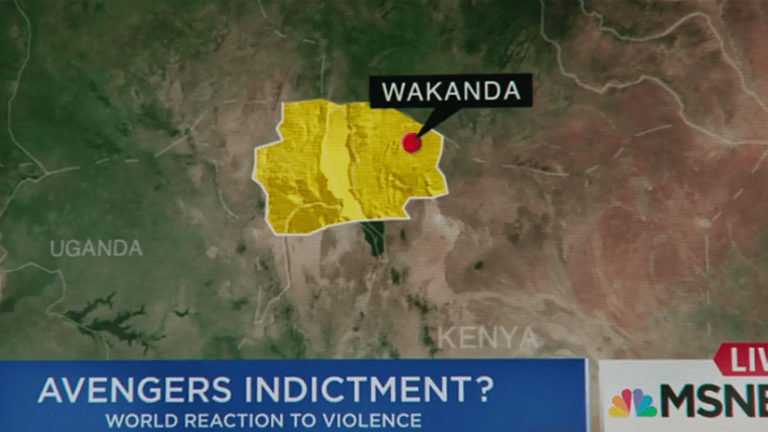
This description would place Wakanda somewhere between the White & Blue Nile, a region which is considered the origin of humanity and human civilisation. It is also the region that was popularly known as Kush, a nation that gave birth to what became known as Kemet and who put up the fiercest resistance to the many Eurasian invasions that plagued Afrika over hundreds of years.
More recently however, when we consider the second description in relation to the “Scramble for Africa” (1800’s), the names Empress Taitu & Emperor Menelik II come to prominence as the rulers of Ethiopia, the only Afrikan Nation to withstand the European invasions of that time, and thus, never be colonised. The Battle of Adowa in 1896 effectively put an end to Italy’s hopes of annexing more Afrikan land in its colonial project and put the rest of Europe on notice that Ethiopia was off limits. As a result, Britain, France and other Colonial aspirants had to sign treaties with the Emperor, effectively isolating Ethiopia as a lone nation surrounded by those colonised by Britain, Italy, France and Belgium. Certainly, “When you consider the history of the region… well it’s unprecedented.”
It is interesting to note that in April of 1966, months before the introduction of Black Panther, The Conquering Lion of the Tribe of Judah aka His Imperial Majesty Haile Selassie I, made his famous trip to the Caribbean during which he visited Haiti, Trinidad & Jamaica. His journey would draw world attention to the existence of Rastafari, and entire movement of thousands in Jamaica directly inspired by his personage. H.I.M. was actually considered in a similar light to that of King T’Challa in Wakanda for a number of reasons, principle among them being he was a Warrior King of Black Nation.
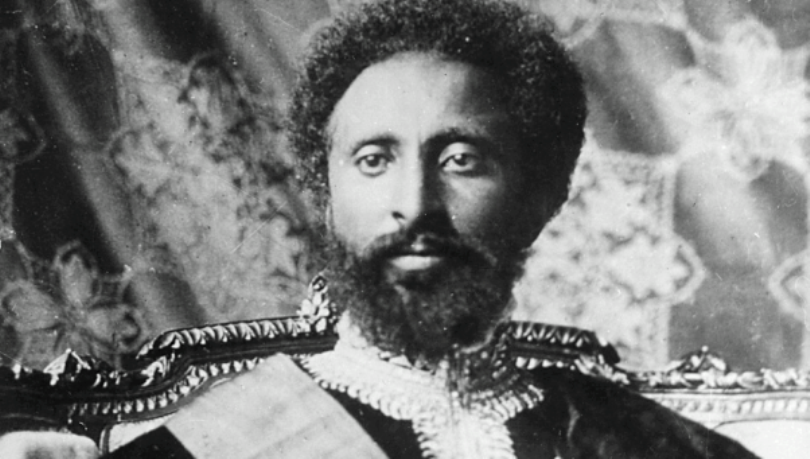
In 1935, Italy invaded Ethiopia again; an act which rallied Black people around the world to Ethiopia’s defence. 1936 saw Emperor Haile Selassie in London addressing the League of Nations. He delivered a now famous speech, condemning Europe as whole for colluding with Italy. He also basically prophesied the coming of Mass European War II.
Then in 1963, His Majesty stood beside the Osageyfo as they hosted the first conference of the Organisation of African Unity in Addis Abba, Ethiopia. This event came at the height of the Afrikan Independence era that was changing the face of Afrika and and how the continent was depicted on the world stage.
Changing the Face of Afrika
“When my wife had a baby boy, I said, “The nigger’s name is Malik Nkrumah Stagolee Seale… Beacause Stagolee was a bad nigger off the block and didn’t take shit from nobody. All you have to do is organize him, like Malcolm X, make him politically conscious. All we have do is organize a state, like Nkrumah was trying to do.” (3)
These are the words of Bobby Seale, Co-Founder of the Black Panther Party for Self-Defence. Through the naming of his son, he beautifully illustrates the primary influences of the Black Power Movement of the 1960’s. Beginning with the Mau Mau rebellions in the 1950’s, Afrikans in America had begun to draw more inspiration from Afrikan Liberation movements on the continent.
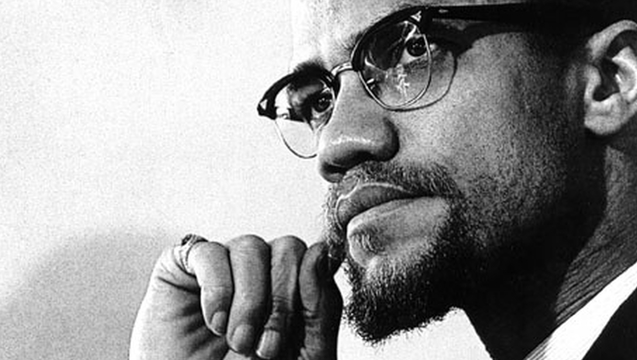
One person who was at the centre of this evolution was Omowale Malcolm X, who before being assassinated in 1965, was fast emerging as the pre-eminent Pan-Afrikanist of his time. In the last year of his life, he had travelled to Afrika and met with Nkrumah, Sekou Toure, Julius Nyere, Jomo Kenyatta and a myriad of grassroots Afrikan Revolutionaries. This inspiration formed the basis for his founding the Organisation of Afro-American Unity, for which he made his intention clear:
“the first step that has been taken, brothers and sisters, since Garvey died, to actually establish contact between the 22 million Black Americans with our brothers and sisters back home… as members of the Organization of African, or Afro-American Unity, we set out on a program to unite our people on this continent with our people on the mother continent. And this frightened many power—many interests in this country.” (4)
And America had good reason to be frightened as Malcolm would return from Afrika with pledges of support from many Afrikan nations. One nation of Particular interest to him, and central to any discussions on the inspirations behind Black Panther and Wakanda is the Congo. Patrice Lumumba, its first Prime Minister had been assassinated as a result of a conspiracy heavily involving the American Government in the form of the CIA. There motive was clear – it was the Cold War and America was keen to enforce its influence on Afrika. Lumumba, however had no intentions of succumbing to this demand:
“… be sure that we will count not only on our enormous strength and immense riches but on the assistance of numerous foreign countries whose collaboration we will accept if it is offered freely and with no attempt to impose on us an alien culture of no matter what nature.”
“The Congo’s independence marks a decisive step towards the liberation of the entire African continent. Sire, Excellencies, Mesdames, Messieurs, my dear fellow countrymen, my brothers of race, my brothers of struggle– this is what I wanted to tell you in the name of the Government on this magnificent day of our complete independence. Our government, strong, national, popular, will be the health of our country. I call on all Congolese citizens, men, women and children, to set themselves resolutely to the task of creating a prosperous national economy which will assure our economic independence.” (5)
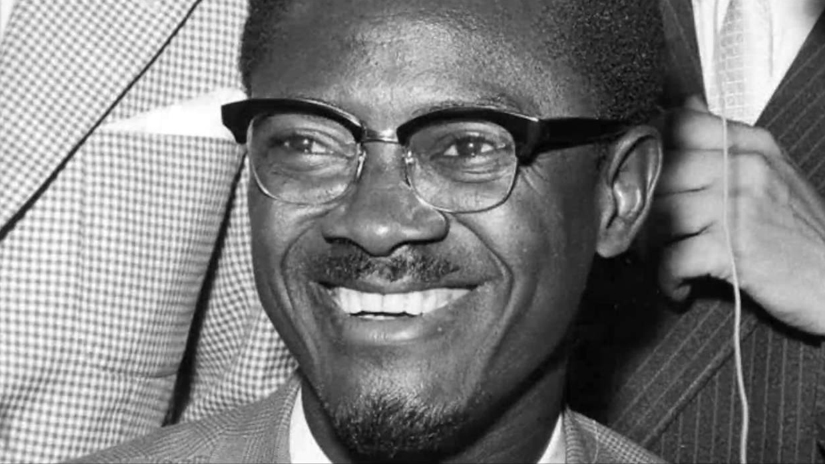
These pronouncements pricked the ears of the Governments of Belgium & USA in particular. As Belgian Sercret Service Agent Louis Marliere would later state:
“Lumumba chose the wrong side. Of course he was more or less a communist and he chose the Russian side rather than the west.” (6)
CIA agent Larry Devlin reinforces the above with the assertion:
“Lumumba was a danger for both the Congo and the rest of the world, in the sense that he was allowing the soviets to come in and we certainly believed that there was a very good chance that they would come in and take over control of the Congo.” (6)
Since Congo was one of the non-aligned Nations of Afrika, these assertions are patently untrue, but it did serve as the pretext for moving to Assassinate of Lumumba just 6 months into his government. They may have simply been able to brush it under the carpet had it not been for a man named Omowale Malcolm X.
Malcolm X Considered “Lumumba, the greatest black man who ever walked the African continent.” And spent a significant amount of time in numerous speeches condemning America for having the blood of Lumumba on their hands. He was also initiating a programme that would have been a Cold War disaster for the USA:
“So those of us whose political, and economic, and social philosophy is black nationalism have become involved in the civil rights struggle. We have injected ourselves into the civil rights struggle, and we intend to expand it from the level of civil rights to the level of human rights. As long as you’re fighting on the level of civil rights, you’re under Uncle Sam’s jurisdiction. You’re going to his court expecting him to correct the problem. He created the problem. He’s the criminal. You don’t take your case to the criminal; you take your criminal to court…. So our next move is to take the entire civil rights struggle, problem, into the United Nations, and let the world see that Uncle Sam is guilty of violating the human rights of 22 million Afro-Americans. Uncle Sam still has the audacity or the nerve to stand up and represent himself as the leader of the free world. Not only is he a crook, he’s a hypocrite.” (7)
Key to his strategy was the aforementioned strengthening of ties between Afrikans on the continent and Afrikan in the Americas:
“…once the lines of communication have been established, and our Afrikan Brothers can stretch forth their hand & reach us, and we can stretch forth our hand & reach them, there’s nothing that this blue eyed man in this country will be able to do to you and me successfully from that day onward.” (8)
In Afrika, he would speak before the OAU warning Afrikan Nations about the true intentions of the smiling white Americans present in the meetings. He would charge the USA as responsible for destabilising the Congo because of its strategic economic value to the entire continent.
All this had a number of implications for the USA. Firstly, you had a world recognised leader with enough of a profile and competence to complete destroy American Cold War propaganda assault by making the conditions of Afrikan in America a matter of international news.
Secondly, Afrikan Nations were throwing off the shackles of oppression left, right & Centre. Afrikan leaders including Lumumba had visited the USA in the 60’s and the accompanying press had added a new, previously unseen image of respectability to Afika in the minds of the America public. With the Afrikan independence movement alreayd inspiring the Liberation movements of Afrikans in America, the American government had a vested interested in sabotaging any link between Afrikans across the waters as they attempted to coop Afrikas leaders. Omowale Malcolm X was a direct threat to this agenda.
Thirdly, the role and power of Afrikan Nations on the world stage was an unknown factor to the European and America at the time. The idea that Afrika may have the power to move against America politically and/or economically for its treatment of Afrikans was a very real possibility.
So, we bring it back to the comic book world, where it is today pretty well known that Marvels X-Men was inspired by the Civil Rights Movement. As Stan Lee stated
“I couldn’t have everybody bitten by a radioactive spider or zapped with gamma rays, and it occurred to me that if I just said that they were mutants, it would make it easy. Then it occurred to me that instead of them just being heroes that everybody admired, what if I made other people fear and suspect and actually hate them because they were different? I loved that idea; it not only made them different, but it was a good metaphor for what was happening with the civil rights movement in the country at that time.” (9)
The basic idea is that Professor X & Magneto are but an allegory for Martin Luther King and Malcolm X respectively. Though some question how direct this representation was in the beginning, it is clear that X-Men story lines have quite explicitly explored the various responses an oppressed people will adopt in fighting oppression. Furthermore, the movies have played on the comparison down to having Magneto quote Malcolm’s “By any means necessary” declaration in X-Men II.
So, we know that Stan Lee and Jack Kirby had their eyes of the Black Liberation movement. No doubt, the changing face of Afrika would have informed their creation of the Black Panther Character. It would seem obvious that Vibranium, the omst precious metal in the world, found exclusively in Wakanda, symbolises the mineral wealth of Afrika in general. However, if there was a single nation that it would represent it would have to be Congo. Today Congo is being raped for any number of resources, but chief among them is Coltan, the metal central to the production of practically every electronic device ubiquitous to the western world.
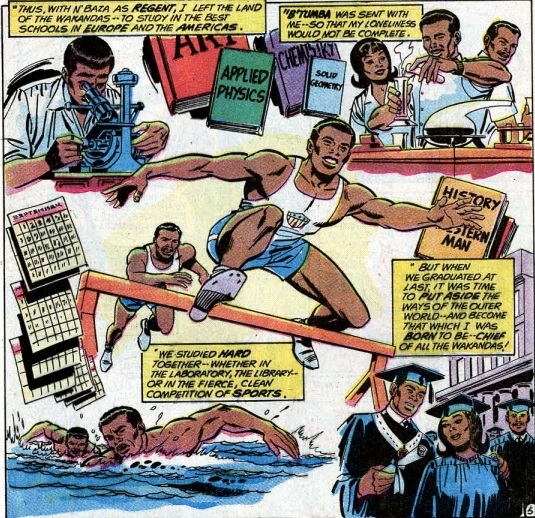
Marvels first Black Super-Hero is from Afrika. He represents a significant shift in the perception of Afrika and Afrikans in the minds of the American Super Heroes. He is the symbol of Afrikan independence, self-reliance and technological advancement. He even studies in America and Europe as many who became Afrikan heads of state had done. And he also just so happens to invite the Fantastic Four (Cold War Hero’s) for assistance in battling his son-of-a-Nazi enemy; later moving to America in order to join Earths Mightiest Hero’s – The Avengers, headed by Iron Man and Captain America, both linked to European War II and the Cold War.
On a side note, why are “The Avengers” called “The Avengers”? What exactly are they Avenging?
Cultural Nationalism & Afrikan-Centred Movement
Since the 90’s Black writers have been prolific in developing the Black Panther character and the world of Wakanda. All have drawn heavily from the fact that the Afrikan-Centred movement was die hard in restoring dignity to Afrikan Culture in general and popularising particular Afrikan Cultural ideals and expressions. I will only touch on a few examples, but the mythology of Wakanda is full of Africentrisms. No doubt the film will add more to this dynamic.
Let’s us begin with Afrikan Spirituality. Spirituality is always the highest expression of a people’s culture and one of the defining agendas of the Afrikan Centred Movement has always been the rescue of Afrikan Spirituality from demonization at the hands of Islam and Christianity in particular. By far, the Spiritual Traditions of Kemet and that of the Yoruba (Ifa) are the cosmologies that have stood at the forefront of this effort.
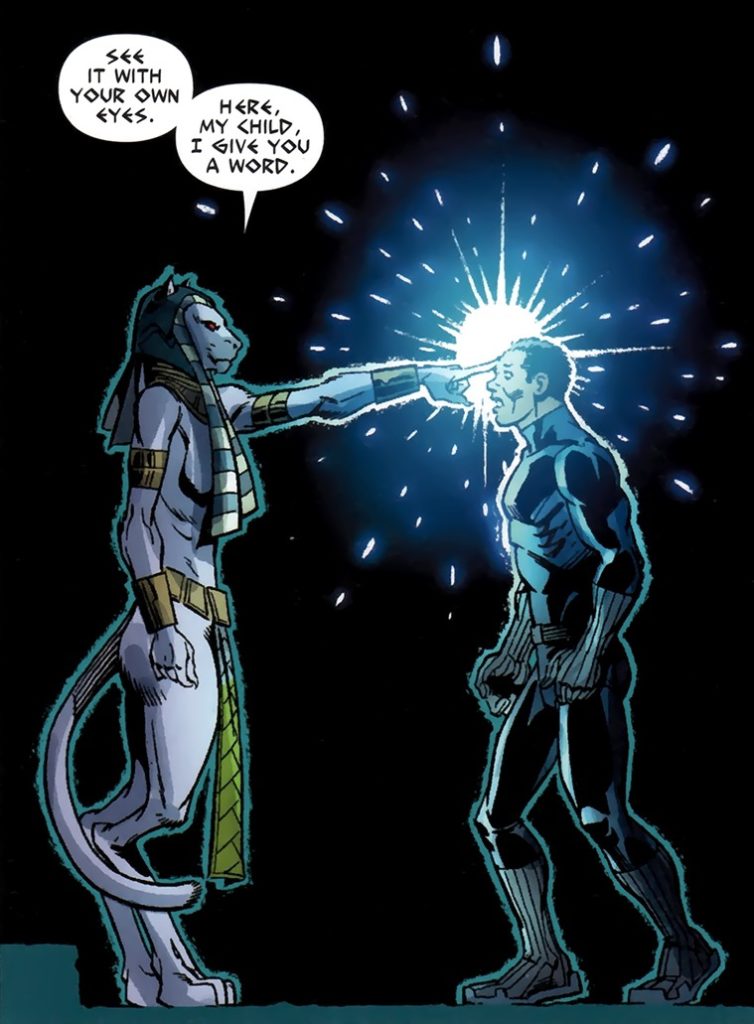
The spirituality of Wakanda is possibly its least explored feature to date, however there are a few telling indicators. The primary deity is commonly referred to as “The Panther God”. In Captain America Civil War, T’Challa provides this insight:
“In my culture, death is not the end. It’s more of a stepping-off point. You reach out with both hands, and Bast and Sekhmet, they lead you into the green veld where you can run forever.”
Bast and Sekhemet are twin deities lifted directly from Ancient Nile Valley traditions. Bas, The Panther (or Black Cat) Deity was popular in Lower Egypt (Kemet), while Sekhmet was popular in Upper Egypt & Kush. The unification of Upper & Lower Egypt (3000 BC) would see a merging of the spiritual systems and the two represented Twin Warrior Goddesses.
Another defining feature of Afrikan Spirituality is that of Ancestor Veneration and Ancestors Communion. In his book Ancestral Voices: Spirit is Eternal, Dalian Adofo explains:
“The status of Ancestors is not one achieved automatically by death. There are conditions to be first fulfilled. The individual would have lived a long and dutiful life; to their families And the society at large. This individual is held to be an enlightened being, one that has achieved self realisation, as reflected in the title given them by the Akan – Nana:
‘The Akans hold that state of Nanahood as the goal and fulfilment of human life… the phrase ‘Nananom Nsamanfuo’ meaning ‘ The Giver & Source of Enlightenment’, is the invocation used when any Akan prays at any time to the Supreme Deity. (10)

Libation as a ritual was undoubtedly popularised in the west by Afrikan Nationalist concerned with preserving Afrikan Traditions as well as remembering the sacrifice and achievements of our collective ancestors. King ‘Challa can often be seen seeking the council of his Ancestors in scenes such as the above. This feature was further developed by Ta-Nehisi Coates, the latest Black Panther Comic writer, who introduced the concept of “The Djalia”, described as:
“… a transcendent plane that represented Wakanda’s collective memory.”
Incidentally, Ta-Nehisi Coates is the son of Paul Coates, founder of the legendary Black Classic Press; a company “devoted to publishing obscure and significant works by and about people of African descent… In 1978, when we started publishing, three elders were inspirations and gave their support – John G. Jackson, John Henrik Clarke and Yosef ben-Jochannan. We are informed by the examples of these three giants.” (11)
These three giants remain the stallwarts of Afrikan-Centred historical restoration. One of the works that BCP was responsible for republishing is Seize the Time, Bobby Seale memoir of the Black Panther Party. Ta-Hehisi therefore comes from a rich tradition of Afrikan-Centred thought which he brought to Black Panther with the introduction of “The Djalia”:
“There’s a heavy African mythological component in the book… the place you will see it the most… you watch Shuri [Princess/Queen of Wkanda]…. I always thought the whole culture of the Griots Tradition was such a beautiful thing. The word for the plane that she’s on – Djalia – is literally taken from the other word which they use for Griot which is Jali. You know I just kinda changed that. All of that is pulled right out of the tradition…”
He continues he explain the linguistic elements:
“For the most part we’re using Hausa… theres some Swahili in there.” (12)
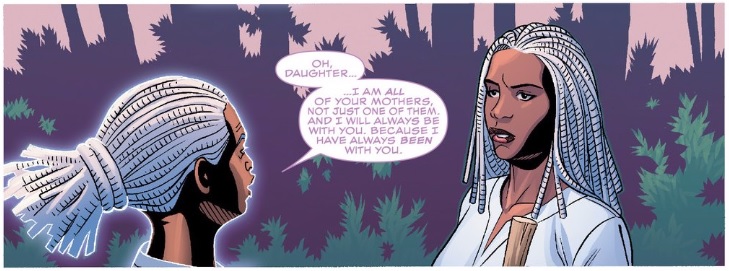
The Afrikan-Centred community popularised the role of the Griots particularly in relation to Black Music forms such as Blues & Hip-Hop. Allegorising the tradition as an actual plane of consciousness through which King T’Challa and his Sister Queen Shuri are able to commune with and learn lessons from their ancestors is a beautiful way to honour the culture and a testament to what we can do when creating from an Afrikan Cultural centre.
Reginald Hudlin’s take on Black Panther seems to have split opinion. His controversial version however was immortalised in 2008 with a mini-series and is distinct in that while most Black Panther story lines rely heavily on his allegiance to The Avengers, Hudlins Political world is drawn directly from Black Nationalist Sensabilities. America is explicitly depicted as a nation attempting invade Wakanda along with a French Assassin, a Christian Missionary and Belgian Mercenary. After dispatching Captain America and rejecting his assistance at the beginning of the series, T’Challa ends the series with this message to the American Government:
“Wakanda appreciates the offer of assistance from the United States. However your help is not needed. If you remain on Wakandan soil for more than 1 hour it will be considered an act of War.” (2)
Hudlin also severed Black Panther from Cold War allegiances, and in an era where America was attempting to install more military bases in Afrika under the banner of AfriCom, he depicted a US government attempting to install a drone army in Wakanda in an attempt to facilitate regime change.. This may have something to do with why this mini-series was never showed on USA Television and had all kinds of problems being produced on DVD.
Coates renditions on the Black Panther cash in on a number of Afrikan historical references from the battle of Adowa, to the Bandung Conference and countless references to Ancient Afrikan empires all of which were popularised by Afrikan Historians and activists. For example Changamire in “A Nation Under Our Feet”, is one of many with real historical origins. The Character is described thusly:
“Changamire was a Wakandan philosopher, the handpicked tutor for King T’Chaka’s royal court, and the personal mentor of Queen Ramonda. His pacifist yet anti-monarchical beliefs cost him the exile from the Golden City. He became a scholar at the Hekima Shulē in Birnin Azzaria, where he continued teaching his gospel.”

Wakanda’s Chanagamire becomes the inspiration behind an attempted coup or revolution (depending on your perspective). Similarly, in real History Changamire was the title of a line of Kings in the Monomatapa Empire of Southern Afrika. The Most famous of them is Changamire Togwa I. We can appreciate the similarities in the narratives as The Black History Man, Robin Walker, in his classic text “When We Ruled”, provides this insight:
“In the 1480’s, Mukombero was on the Munhumutapan throne. The best remembered event during his reign was the revolt of the Changamire of Guruuswa. Changamire Togwa I was original a chief justice or governor of the Mutapa Empire who owned vast lands.in time he increased his wealth to such an extent that even Mukombero began to feel threatened… they spread rumours that Togwa had ambitions to the imperial throne…. Changamire Togwa I refused to comply and instead said word to Mutapa that he would be prepared to fight him in war but he would prefer a peaceful solution.” (12)
Even prior to Coates, the now celebrated run of Christopher Priest introduced the Dora Milaje (Adored Ones), Black Panthers elite all female Secret Service. In one comic they were described as “Amazonian teenage Karate Chicks”. From Queen Nzingha to Yaa Asante Waa to Mbya Nehanda and the series of Kandake rulers of South-East Afrika, Black historians have brought to light the pivotal role played by Women Warriors all over the continent. However, the term “Amazon” is most commonly associated with the women of Dahomey West Afrika, who came to world attention due to there feirce battles with French invaders in the 1800’s. They have a similar origin to the Dora Milaje:
“King Agaja (ruling from 1708 to 1732) established a female bodyguard armed with muskets. European merchants recorded their presence. According to tradition, Agaja developed the bodyguard into a militia… The group of female warriors was referred to as Mino, meaning “Our Mothers” in the Fon language, by the male army of Dahomey.”
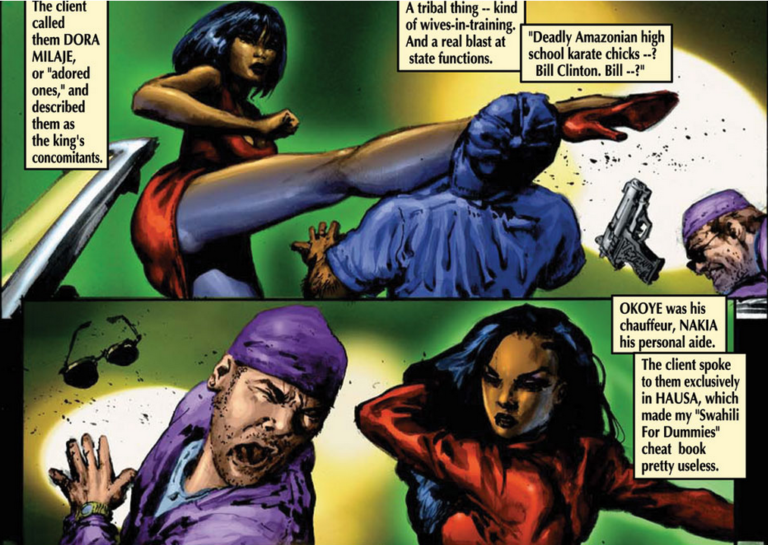
There’s so much more but we can’t exhaust the examples here. However, the above does evidence the fact that the evolution of Black Panther and the world of Wakanda has relied heavily on the ideas developed out of and popularised by the Black Nationalist and Arikan-Centred Movements.
Let’s Wrap It Up
Cheik Anta Diop wrote “The Cultural Unity of Black Africa” & “Black Africa: The Economic & Cultural Basis for a Federated State”. These works have since informed the sensibilities of the Afrikan-Centred movement who have seen the unity in Afrikan cultures and developed synthesised expression of the same. Critics who are unaware of this origin often criticise the Movement for treating Afrika as monolith without respect to varied individual traditions. It is therefore interesting that Black Panther is being celebrated for doing just that; developing a Sci-Fi epic that draws on a myriad of Afrikan Cultures, brought together in a unified expression. While those who hold fast to these principles have recently been caricatured by the slur – “Hotep” – it seems Afrikans from all over the continent and the diaspora have embraced and owned Black Panther as a symbol of collective pride.
It is interesting that many recent events have called the issue of “Black Leaders” in to question. It has not been unusual to come across the phrase “Black People need to get rid of the Messiah Complex” in conversation on and off social media. In 2012, Black audiences enthusiastically flocked to cinemas in order to receive a Quintin Tarantino’s attempt to “Explore the history of Slavery & GIVE Black people a western hero” in the form of Django. Far less enthusiasm met the release of “The Birth of a Nation”, Nate Parkers attempt to bring the story of a real life Afrikan Martyr to the big screen in 2016. Now, Marvel & Disney’s have amassed a cast and crew full of Black excellence for the Black Panther and Black audiences appear motivated again.
Whether real or imagined, the symbolic impact of a Black Hero appears to have significant value in the hearts and minds of Black people. But it’s currently hard to pin point the motivation behind what inspires a mass positive response and what does not. There is such a deep tradition of cultural, economic, political and spiritual resistance at the heart of the evolution of T’Challa and the nation of Wakanda, it would be a shame and a crime to overlook this root, even as it is repackaged and presented to us in the form of Marvels Cinematic Universe.
Ryan Coogler is a brilliant director and Black Panther features by far the most accomplished caste of any film I can recall. This article is intended to inspire us to make the most of their brilliance. It is intended to high light the Cultural and Historical basis behind this work so that Black creators find value in their own heritage as the basis for creative output. It is intended to ensure that as audiences, we are more inspired by our own Black brilliance and our own Black legacy than we are with how it’s associated with big white institutions. It is intended to ensure that if and when the Ryan Cooglers, Chadwick Boseman’s and Lupita Nyngo’s of this world come to us without the backing of Marvel & Disney, we are just as, if not more inspired to come out in our thousands, don our traditional attire, declare our Afrikan names, affirm our cultural self-determination and celebrate their brilliance.
Finally, it is intended to develop value in the real life movements that were on the verge of making all that inspires us about Wakanda an actual living reality. As Claudia Jones said “A peoples Art is the genesis of their freedom”. The legacy of Black Panther is just being written, but the more we are conscious agents of this progression as opposed to passive consumerists, the more we ensure that we serve our own self-determined agenda.
Thank you for reading!
Bless!

- http://marvel.com/universe/Wakanda#axzz56pYUkgPt
- Everett Ross, Black Panther Motion-Comic 2008
- Seize the Time, Bobby Seale
- OAAU Rally, Feb 15 1965, http://malcolmxfiles.blogspot.co.uk/2013/07/a-worldwide-revolution-going-on-feb-15.html
- https://africanlegends.files.wordpress.com/2011/06/patrice-lumumba-speech.pdf
- Assasination: Patrice Lumumba, Documentary
- Ballot or the Bullet,
- Speech
- https://www.theguardian.com/film/2000/aug/12/features
- Ancestral Voices, Dalian Adofo (2016)
- http://www.blackclassicbooks.com/about-us/
- https://www.youtube.com/watch?v=CRJ4URjtgxU&t=1399s


Excellent Brother
This was excellent! I always say Spirit speaks to us through fiction. Ase’
Where’s part 1?
Greetings,
Please follow the link!
https://shakaraspeaks.com/blackpantherpt1/
Well said! The cultural and historical basis is so evident in this movie. Powerful!
Powerful piece that I’ll be sharing with my Children! I have yet to see the Film, not in a hurry to do so, but the cultural resonance is what I admire and Feel most drawn to. Great Insight Shaka Ra! Bless up!